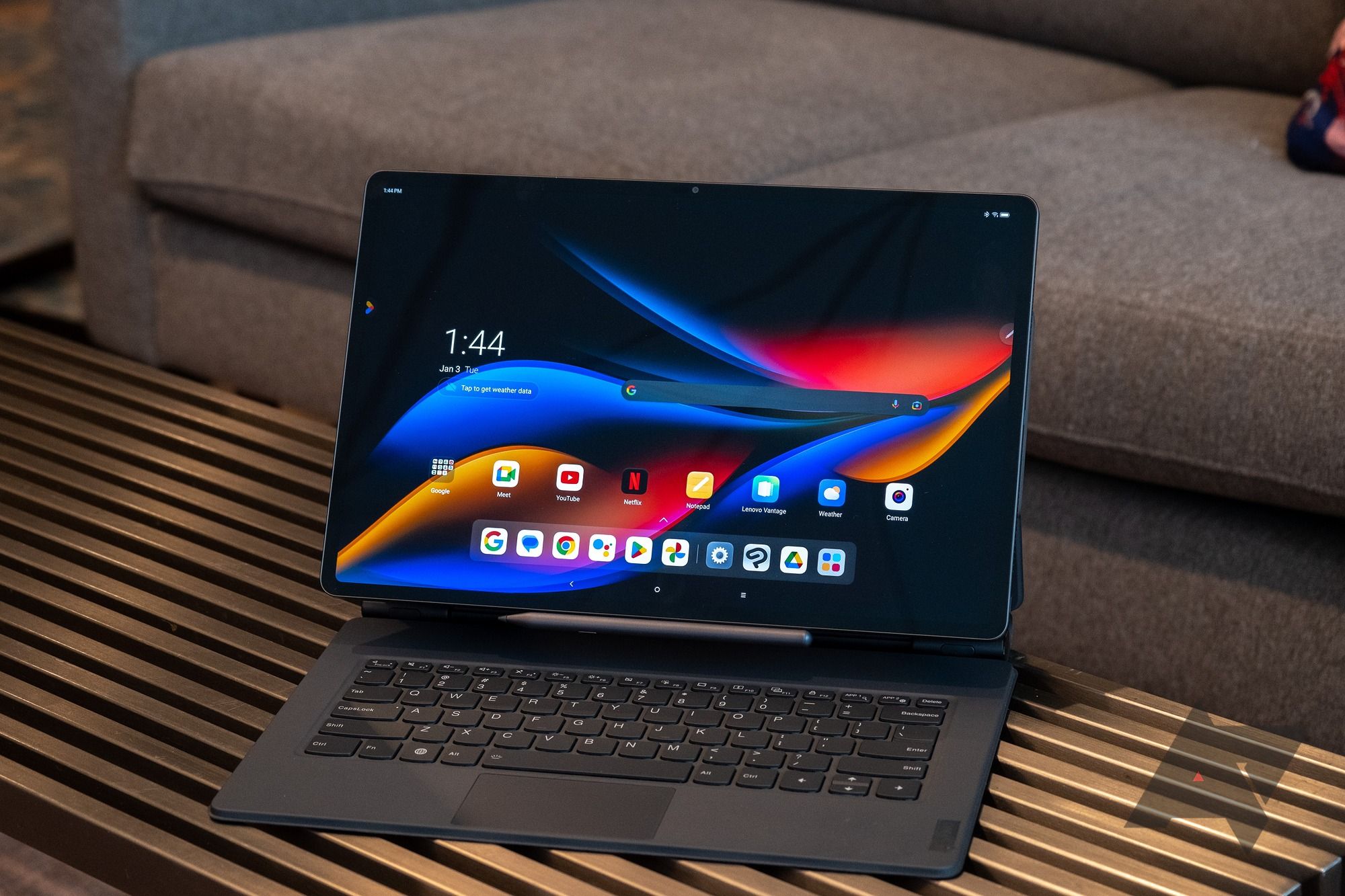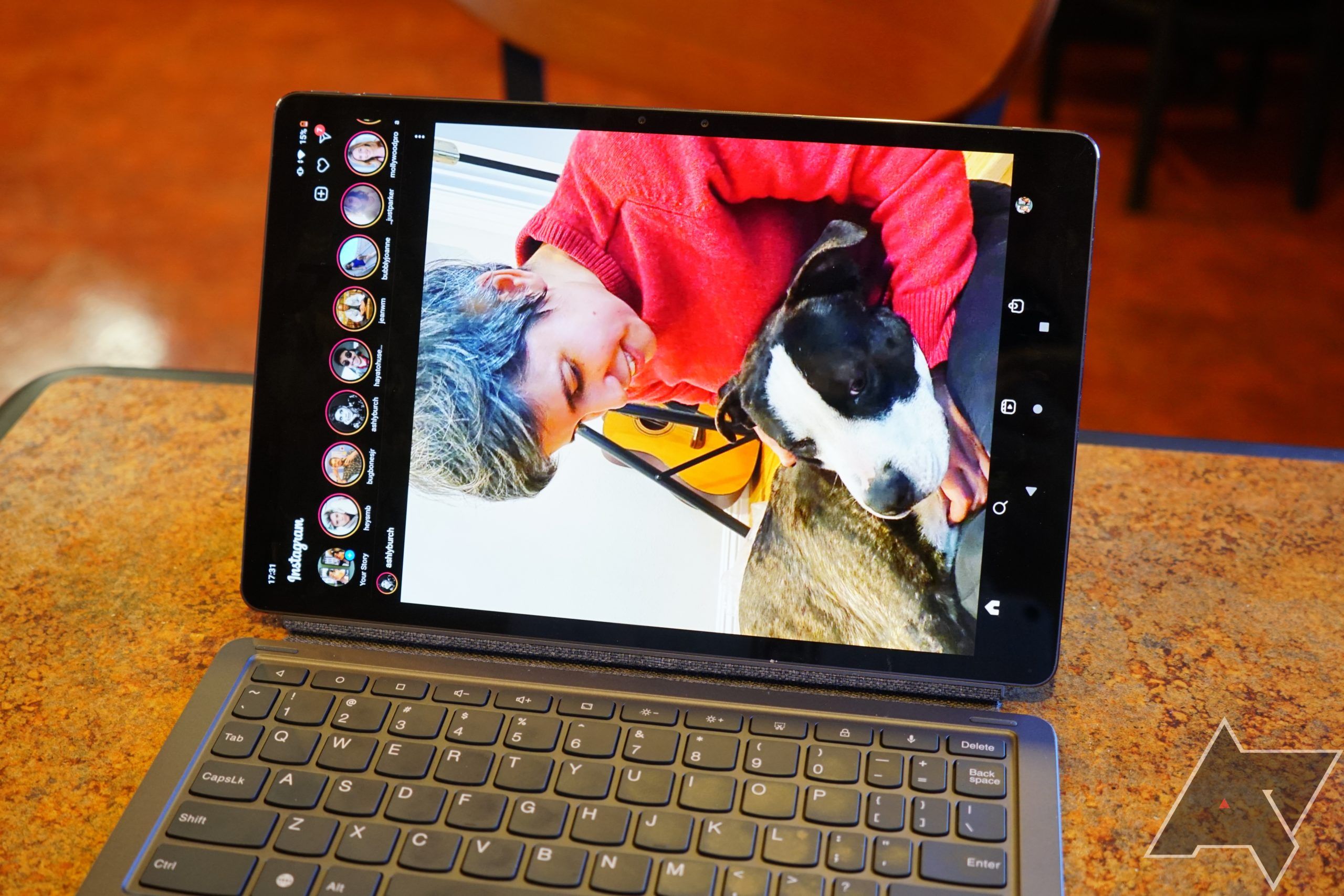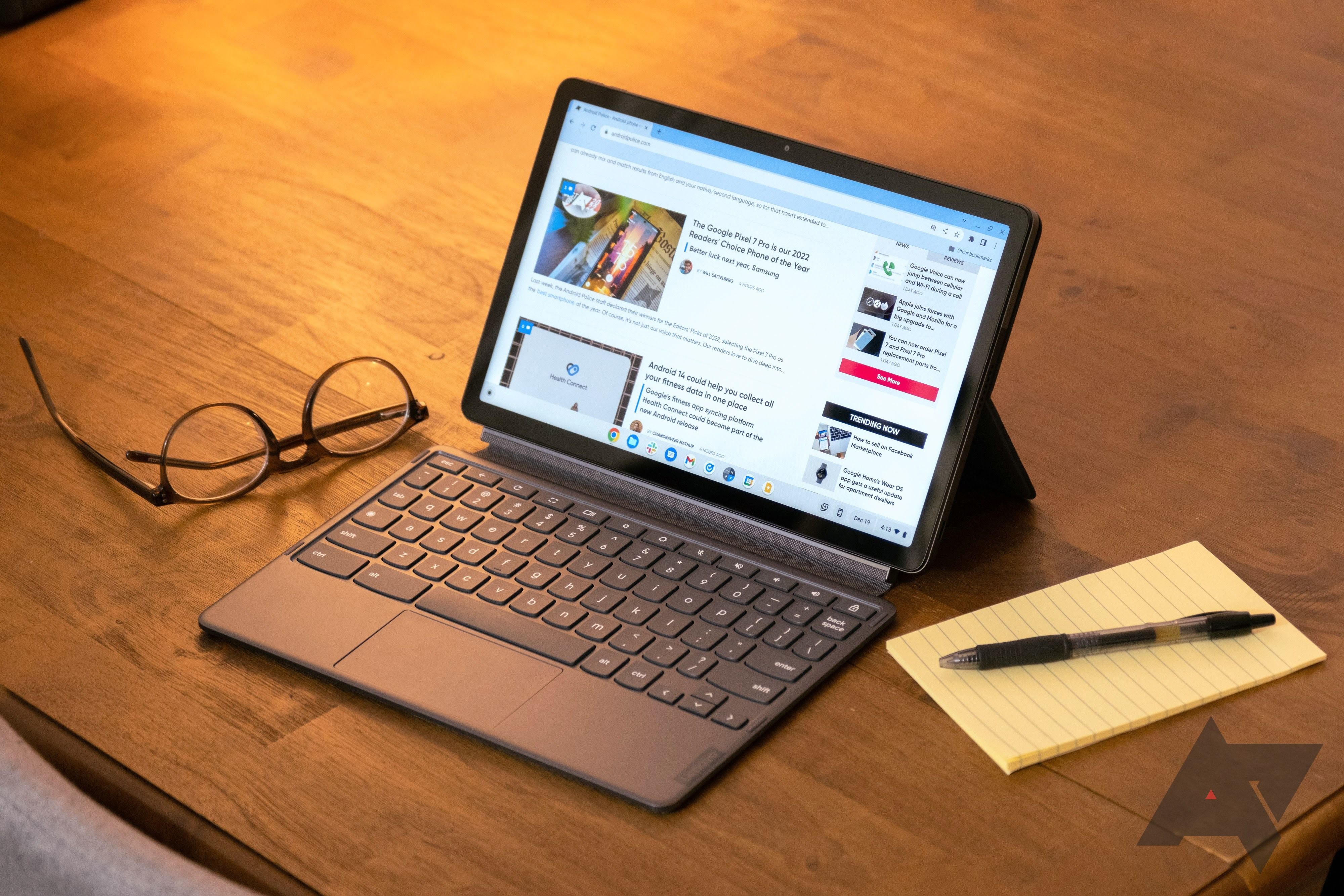While a certain fruit-themed tech company’s tablets get most of the attention, models running Android are in a good place, too. Giants like Samsung continue to release chart-topping, premium Android slates and lesser-known brands (stateside, at least) like Xiaomi make fantastic budget-friendly Android tablets.
Lenovo is also no stranger to compact mobile devices with convenient form factors and capable hardware but gets surprisingly little press for how wide a range of options it offers. Whether you’re looking for a bargain-basement compact tablet just for streaming videos or want a powerful device that can outperform many laptops, Lenovo can help. From its diminutive, ultra-cheap Tab M8 to the Tab S9 Ultra rival Tab Extreme, Lenovo’s tablet lineup offers something for everyone, including some of the most recently released and highly refined options in every price range.
Which Lenovo tablet is right for you?
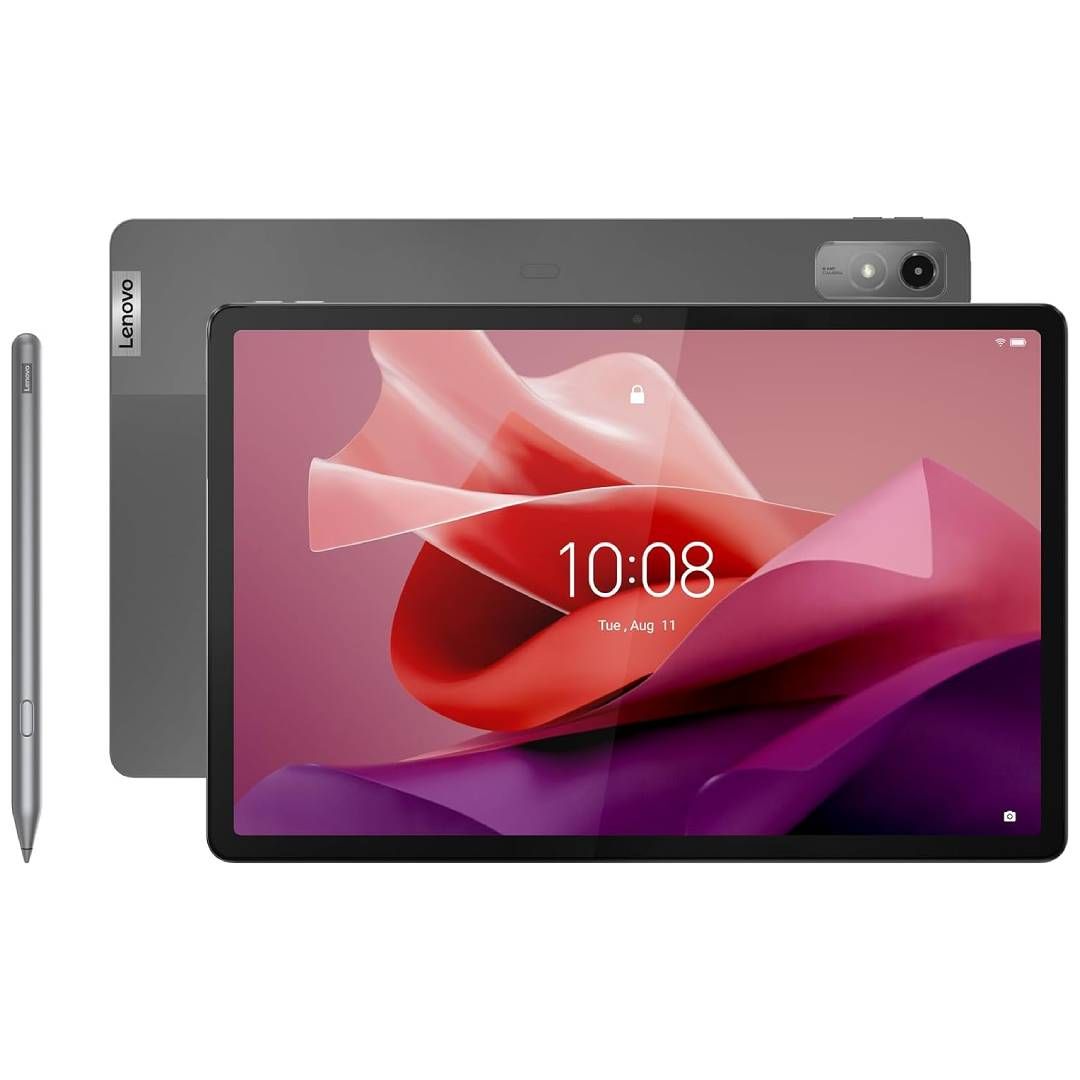
Lenovo Tab P12
Excellent value with few compromises
At first glance, its sub-$400 list price might mislead you, but make no mistake: The Lenovo Tab P12 sports above-average processing power, a great-looking display, and capable memory and storage that few other options offer in this range. The 16:10 aspect ratio and 12.7-inch screen even make it suitable for portable productivity.
- Plenty of high-res screen space
- Under 7 millimeters thick
- Not very expensive
- Lacks a headphone jack
- No mobile data version
Lenovo advertises the P12 as a productivity-forward tablet but certainly doesn’t price it like one. Its $350 MSRP (which you can often find significantly discounted) belies the power inside this impressively slim slate. The MediaTek 7050 SoC more than pulls its weight, leveraging the low-overhead Android OS to perform admirably, even when it’s running multiple apps. Its 8GB RAM module is no slouch either, although the 128GB UFS 2.2 storage could stand to be just a touch faster.
At any rate, its huge display is a great perk, especially at this price. Despite lacking the OLED technology of some of its more costly brethren, the P12 delivers a more-than-satisfying visual experience. Its 2944 x 1840 resolution (which some people call 3K) looks as crisp as the human eye can detect at its 12.7-inch size and supports simulated 10-bit color in addition to capable HDR contrast. It could be a little brighter, but it’s more than passable and not a huge sacrifice, given the cost.
If you’re thinking that a 12-plus-inch tablet is pretty big, you’re right in one sense — it won’t fit in a small bag or purse and isn’t the absolute most portable one-handed device. But never fear, as its sub-7-millimeter thickness makes up for some of that bulk. And if you’re actually trying to get something productive done, rest assured there’s plenty of room, especially once you adjust the scaling to account for the high resolution. Speaking of getting stuff done, the mated stylus and keyboard may be optional, but practically turn this into an Android-driven laptop substitute, if you’re OK with using the mobile OS for work or study.
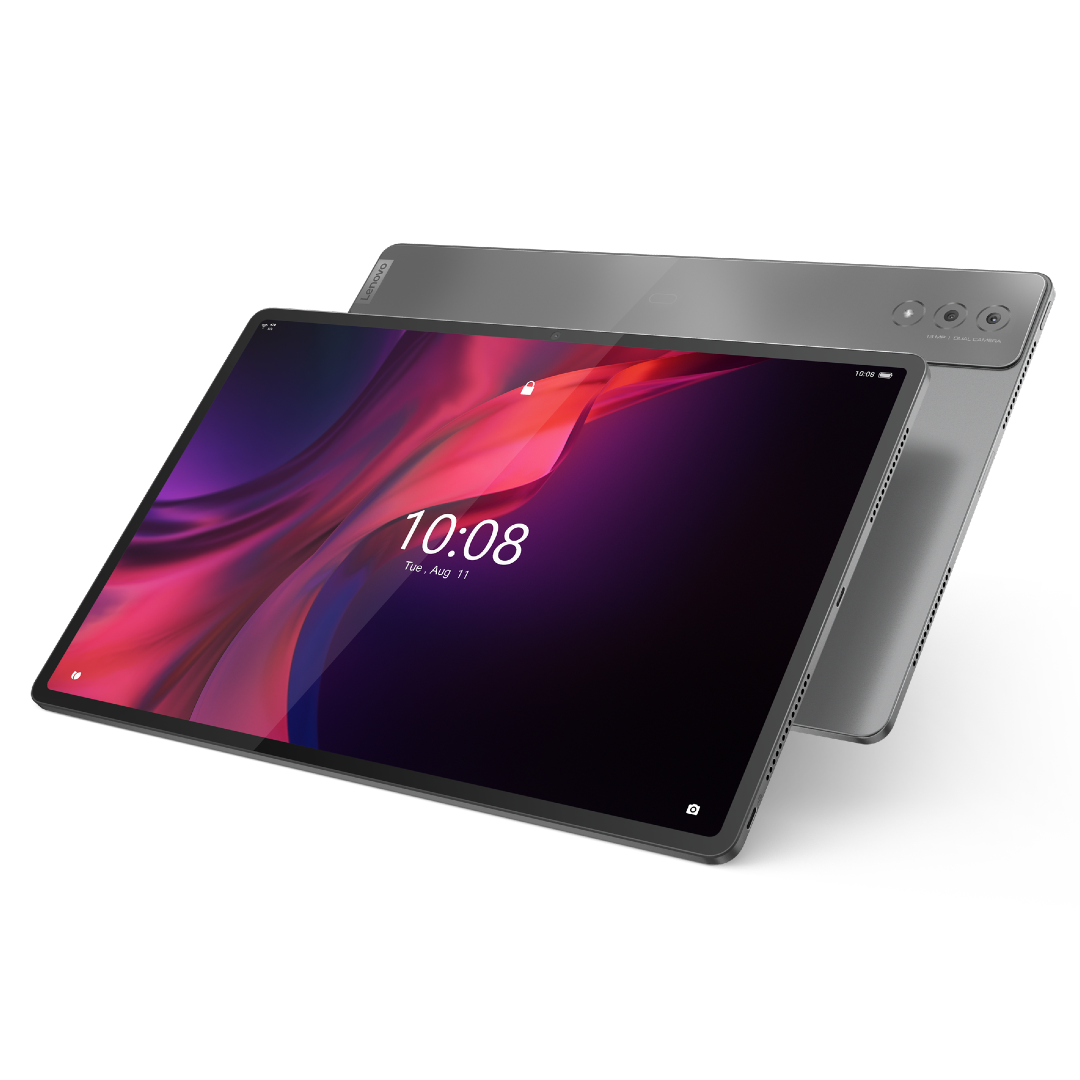
Lenovo Tab Extreme
Lenovo’s answer to the Galaxy Tab S9 Ultra
Few tablets can compete with Samsung’s massive Galaxy Tab S9 Ultra, but that’s exactly what the Tab Extreme sets out to do. Everything about this high-end slate excels, from the absurdly fast MediaTek Dimensity 9000, 12GB of high-speed RAM, and massive battery.
- Huge, colorful, bright OLED display
- Nearly unrivaled processing power
- Supported through Android 16
- Big and a bit heavy
- Bends a little bit under duress
The P12’s great for the price, but real tablet productivity fans won’t find anything better than the Tab Extreme. Very clearly released with aims to dethrone Samsung’s reigning, big-screen Galaxy Tab S9 Ultra, this is as close to a laptop as you can get without a hinge and connected keyboard. It’s even bigger than most Chromebooks, and while it’s heavy for a tablet, its 740g weight and under-6-millimeter thickness are actually surprising achievements.
Of course, with a starting price of around $1,000, it had better offer some impressive specs and high-end design. To little surprise, it does exactly that, with the recently released MediaTek Dimensity 9000 chipset leading the way. This high-end piece of hardware competes with the likes of Apple and Qualcomm’s own high-end SoCs in essentially a neck-and-neck race.
And don’t even get us started on the display. Lenovo makes full use of the potential of modern OLED panels here, enabling a 120Hz refresh rate, HDR10+ and Dolby Vision playback (the latter of which you won’t find on the Galaxy Tab S9 series), 500 nits of peak brightness, and truly impressive, 97% color of the DCI-P3 cinematic color gamut.
But let’s not stop there. A big tablet with so many bright, colorful pixels probably offers middling battery life, right? Wrong. It lasts for just more than 11 straight hours of video playback, just a smidgen less than its big-screen competitor. Even the cameras are great, capturing 13MP and able to record in 4K at 30FPS. If you’re looking for a professional-grade Android tablet that can legitimately replace a laptop, this is it. In fact, given that it nearly matches or exceeds the Galaxy S9 Ultra in almost every category but at a lower price, it’s one of the best large-format Android tablets on the market.
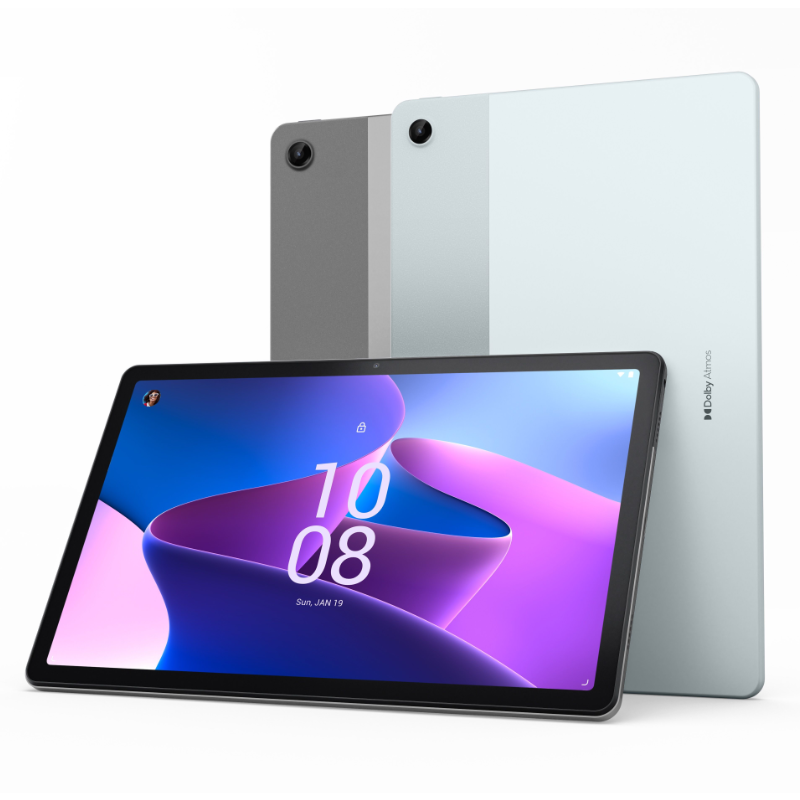
Lenovo Tab M10 Plus
Good for more than just streaming video
While it’s not quite as portable as Lenovo’s smaller offerings, the third-gen Tab M10 Plus still isn’t bulky or overly heavy and delivers noticeably smoother and more consistent performance thanks to a step-up in component quality. Our own hands-on experience was nothing short of excellent, confirming that it’s one of today’s best entry-level choices.
- High resolution for the price
- Security updates through 2025
- Up to 128GB storage and 4GB RAM
- Still not exactly a speed demon
- Could stand to be a little lighter
An excellent compromise between compact and pricey, the third iteration of the Tab M10 Plus sports a Snapdragon 680 SoC and up to 4GB of RAM, enough to make quick work of most everyday tablet tasks. Front and back 8MP cameras, along with a high-resolution, 400-nit screen make it clear this isn’t some cheap-o throwaway model, despite its reasonable price. In fact, it’s one of the cheapest Android tablets around if you want to avoid potentially frustrating slowdowns, and its use of Android 13 brings it in line with the modern experience of many mid-range options.
It doesn’t exactly stand out in any significant ways, but it also doesn’t have any major weaknesses for something in this price and performance class. Similar to many of Lenovo’s low-cost offerings, it feels considerably more well-built than you might expect and just about hits the sweet spot at just a hair over a pound. Few options make better buys as long as you know you’re not getting a super-high performer, although we do wish the LTE model was more easily available and didn’t usually cost twice as much as the Wi-Fi-only version.
Read our full Tab M10 Plus review.
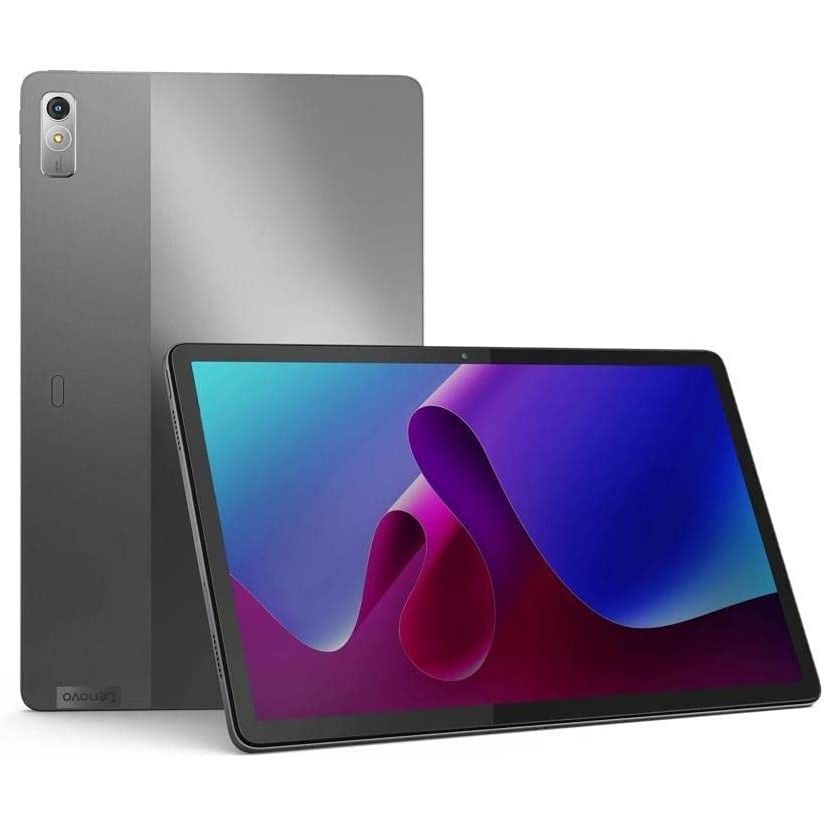
Lenovo Tab P11 Pro Gen 2
A high-end display backed by capable hardware
Only one other tablet in this price range has a screen even remotely comparable to the second-gen Tab P11 Pro’s, and that one doesn’t run Android. An OLED screen equipped with impressive brightness and Dolby Vision support makes this the perfect option for getting the most out of your favorite movies on the go.
- Few tablets have better-looking screens
- Weighs barely over a pound
- Cheaper than an iPad
- Shorter battery life than its predecessor
- No optional LTE modem
Alright, Lenovo, nobody’s kidding themselves. The Tab P11 Pro Gen 2 was released six weeks before the 2022 Apple iPad and beats it in nearly every respect despite costing a touch less. The quite-simply-fantastic display boasts Dolby Vision and HDR10+ support, in addition to a 120Hz refresh rate and a 600-nit brightness you won’t find anywhere else in this price range. It even tips the scales at 480g, nearly identical to Apple’s insanely popular moneymaker. We’d actually be surprised if Lenovo didn’t use the latest iPad as a target.
The cameras won’t wow you, but at 13MP on the back and 8MP for selfies, they work just fine for casual snapshots and video calls. And the P11 Pro 2 beats the iPad in terms of storage, with the base model offering 128GB and the more advanced one 256GB (although good luck finding the bigger one, as it appears to not have been released in the US, or at least isn’t readily available).
Taken as a whole, Lenovo’s mid-range OLED tablet very nearly copped our best overall award. It’s basically a toss-up, and if you’re insistent on top-quality media consumption, few better choices exist.
Read our full Tab P11 Pro Gen 2 review.
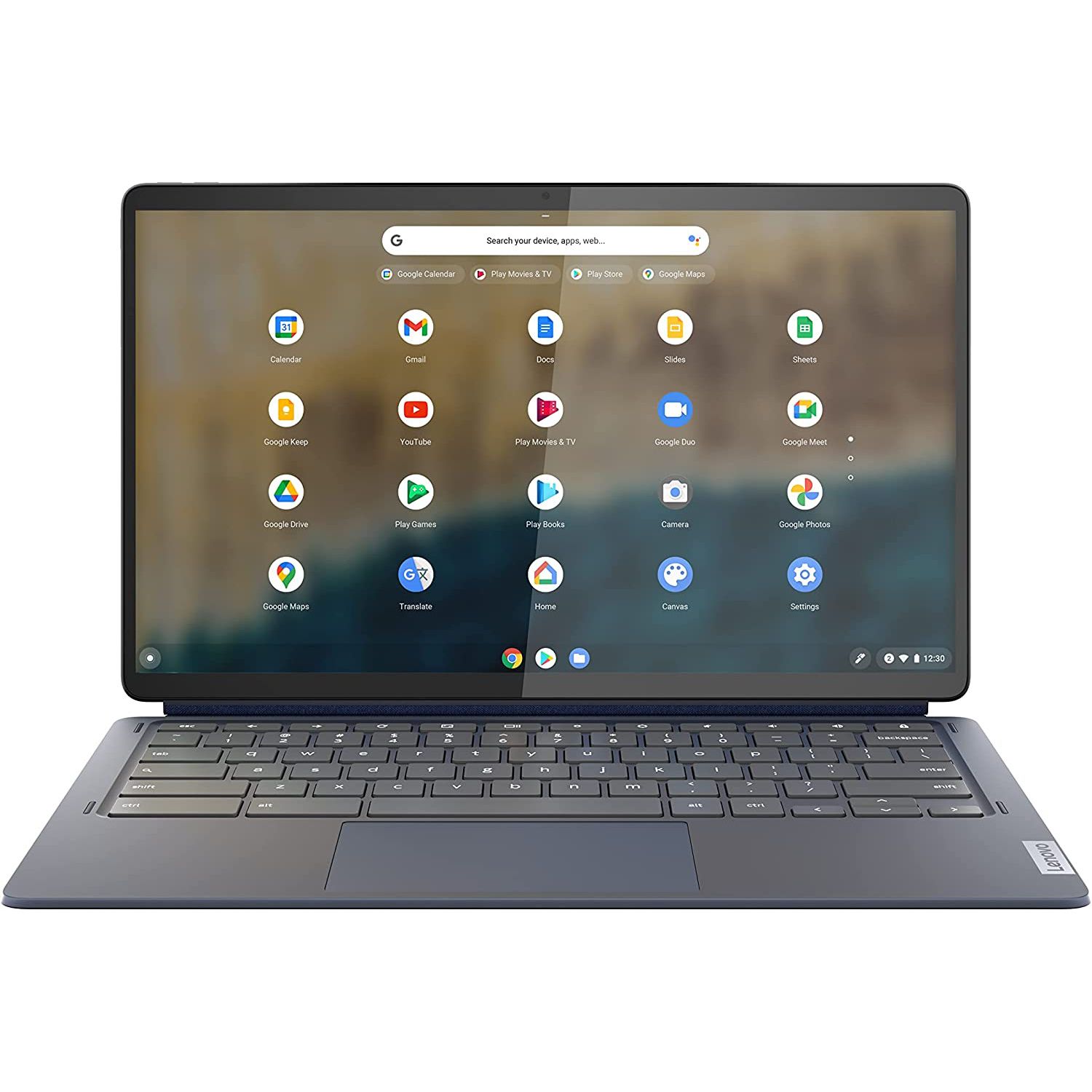
Lenovo Chromebook Duet 5
Half Chromebook, half tablet, all awesome
Blurring the lines between ChromeOS laptop and Android tablet, the Chromebook Duet 5 does run Android apps and boasts nearly unrivaled versatility. While it isn’t the easiest to use one-handed due to its relatively large size, the added productivity makes that a worthwhile tradeoff.
- Impressive OLED display
- Great performance for a tablet
- Perfect for many remote workers
- A little big and heavy in tablet mode
- Middling performance for a Chromebook
If you’re looking for something to carry around for on-the-go entertainment as well as getting a spot of work done at cafés here and there, you can stop your search. The larger of Lenovo’s 2-in-1 Chromebooks, the Duet 5 combines the best of both worlds with a better-than-expected keyboard, plenty of RAM for multitasking, and the real-life duality that is a benefit of detachable laptops in general.
Of course, there are pros and cons to riding the fence between two relatively established device categories. Its display is worth writing home about, with above-average brightness and remarkable color depth, including 150% sRGB, 96% Adobe RGB, and 100% DCI-P3 gamut coverage. Like other great tablets, its battery life also excels as long as you don’t spend the entire time typing, which draws more power than you might predict.
On the flip side, it falls behind full-fledged Chromebooks in the processing power field, since it is still a tablet at heart in many ways, and uses the less-than-stellar (but mightily efficient) Snapdragon 7c Gen 2 SoC to compute numbers. Nonetheless, it’s extremely competent at things like research and writing, making it ideal for digital nomads or other remote workers who want something useful that’s still lightweight and compact.
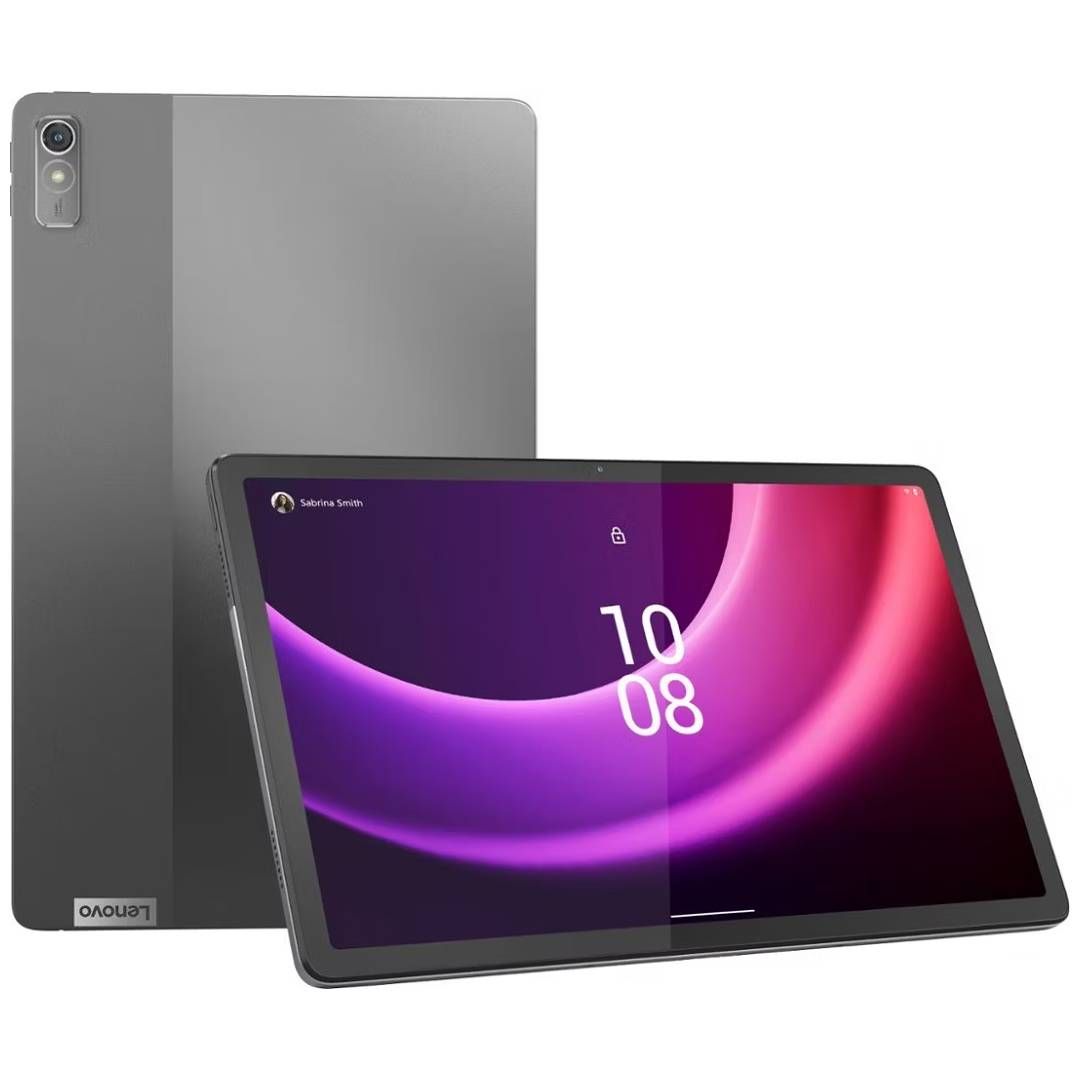
Lenovo Tab P11 Gen 2
Large display at a reasonable price
For those not sold on its more costly sibling’s display, the Tab P11 Gen 2 makes a competent, if slightly less powerful alternative. It’s an all-around good performer, will receive Android 14, and the screen looks just fine despite using less advanced LCD technology than the Pro version.
- Bigger display than the first-gen
- High-resolution, reasonably bright display
- Often discounted to around $200
- Some performance hiccups
- 40g heavier than the Pro model
As if Lenovo didn’t already seemingly offer 400 tablets in varying sizes and hardware configurations, the 2023 Tab P11 sees a minor size increase from the previous version, differentiating itself ever so slightly in screen space and portability from the Tab M10 Plus. In terms of performance, it sits squarely between the M10 Plus and P11 Pro Gen 2, with a capable (but not barn-burning) Helio G99 chipset running the show.
Despite its sub-$300 MSRP and frequent discounts, this decidedly modern tablet boasts helpful features like Wi-Fi 6E, which ensures great network performance and mitigates the Wi-Fi radio’s battery use as well as local airwave congestion. A 7.5-millimeter thickness, metal back and frame, and Gorilla Glass 3 front make it feel significantly more premium than something this cheap has any right to.
While it doesn’t quite perform on the level of most others, it’s great at what most people use tablets for, and the display looks significantly better than many of its direct competitors’ — even if it’s a far cry from the P11 Pro 2’s OLED panel.
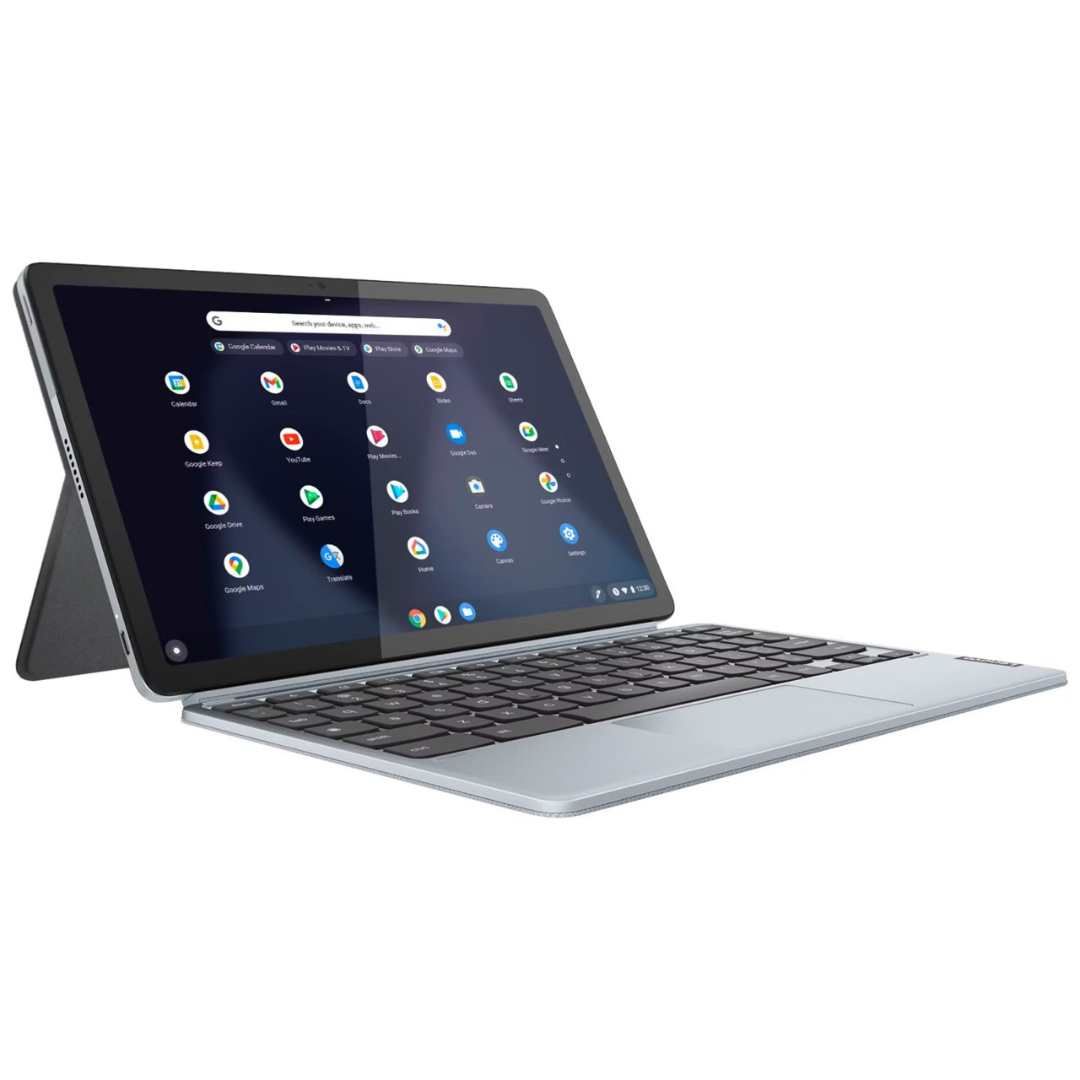
Lenovo Chromebook Duet 3
Mostly a tablet, but you can type on it, too
It shares the same concept as its larger relative, but the Chromebook Duet 3’s compact size makes it a somewhat different beast. Instead of a 50/50 balance between laptop and tablet, it’s a little more like a high-performing slate that happens to have a perfectly mated keyboard.
- As portable as a 2-in-1 gets
- Surprisingly good typing feel
- Very crisp display
- Keyboard size takes some getting used to
- Limited to light workloads
You shouldn’t buy a particular tablet or laptop just because it’s cute, but that’s the first thing that popped into our mind when we first started using the Chromebook Duet 3. It may not literally be the smallest laptop ever, but it sure feels like it. While it’s heavier than a standard tablet altogether, it’s easy to use in tablet mode, and the keyboard quality is two steps above what you’d expect from something so tiny and well-priced.
It’s not engineered for high performance, and in fact, we’d prefer if it used anything more advanced than eMMC flash memory for internal storage. Its Snapdragon 7c Gen 2 chipsets match the Duet 5’s, but the 11-inch display almost entirely precludes multitasking and heavily limits what kind of advanced apps you can use, so it runs just fine for what it is. And although the keyboard is thoroughly satisfying, it can be a bit cramped, even for those with small hands.
Eleven inches is pretty much the perfect tablet size for most, but it is a bit small for a laptop. Nonetheless, it’s workable for writing and editing Android Police articles, although it might get old after a few weeks of full-time work. But if your workload’s limited largely to writing and reading, it’s worth considering, especially now that it’s frequently found for around $300 or less.
Read our full Chromebook Duet 3 review.
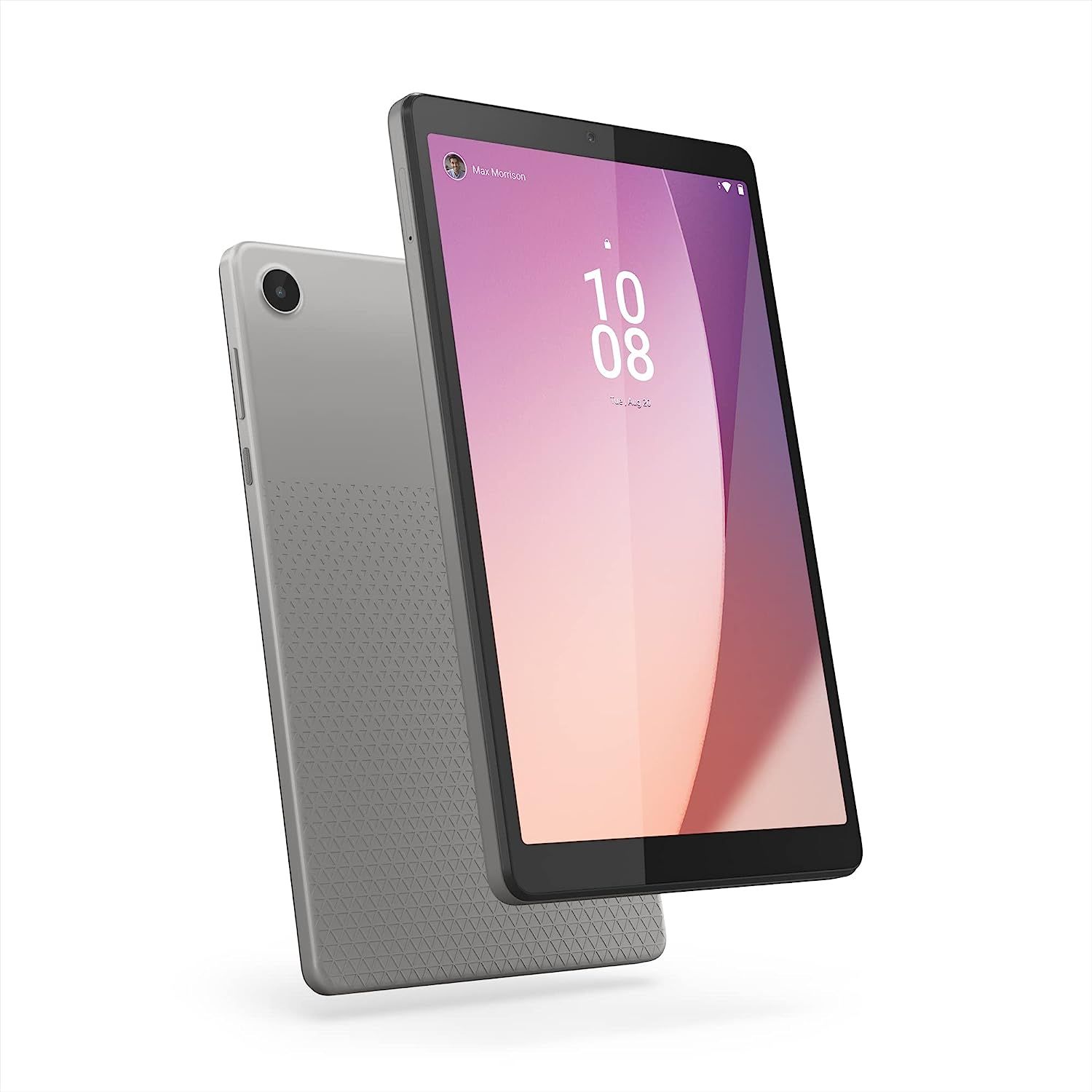
Lenovo Tab M8 (4th Gen)
The ultimate portable streaming machine
Move over Amazon Fire; there’s a new little tablet in town. This Lenovo’s 8-inch Tab M8 (4th Gen) is barely bigger than some top smartphones and fits easily into places other slates can hardly dream of. As you might expect from the low cost and compact form factor, it’s limited in what it can do but is great for browsing social media and watching videos.
- Tablets don’t get any cheaper
- Nearly unmatched battery life
- As durable as anything
- Sluggish performance
- Not particularly versatile
We often recommend the Amazon Fire 7 for people who want a truly handheld, incredibly portable tablet, but that changed with the April 2023 release of the fourth-generation Tab M8. Checking in at under three-quarters of a pound and 9 millimeters thick, even kids should have an easy time keeping hold of this diminutive device. To make no bones about it, it’s underpowered compared to every other Lenovo tablet, but it does perform better than the 7- and 8-inch Amazon Fire models, which are some of its only competition.
Of course, with a list price of $110 and an almost continuous $40 discount from various retailers, nobody’s confused about what this tiny thing is meant for. The Tab M8 Gen 4 works for playing videos, scrolling through lightweight social media apps, and browsing websites. It can technically run other Android apps, too, and the eight-core Mediatek MT8768 SoC outdoes the hardware in similarly sized tablets. But apps that call for anything but the most basic level of processing power are likely out of the question.
Regardless, the Tab M8 fills an important niche. As cheap and small as Android tablets can reasonably get, they can also withstand a considerable amount of abuse due simply to their form factor. A shorter, narrower electronic device that’s also a bit thicker than the rest will undoubtedly survive more of the punishment that comes with, for example, a kid using (and inevitably dropping) their first tablet. So, if you need a cheap media machine and aren’t picky, it might be worth your money.
Lenovo has a lot of tablets, and one’s right for you
Lenovo likes to shake up its tablet lineup with remarkable frequency, leading to a glut of selections. All of the best ones come from within the last two years, and unsurprisingly, the most recent models mostly top the list.
It’s awfully hard to argue with the all-around quality of the Tab P12, one of the newest and most fairly priced options. The Tab P11 Pro Gen 2 particularly excels at HDR video playback, though, which some people find super important. If you like that 10- to 11-inch size, either of those is excellent, and the standard second-gen Tab P11 also makes a strong case given its lower price.
If saving money matters more than anything, you still have plenty of options. The Tab M10 Plus runs and feels considerably better than we expected it to, and the Tab M8 is great for anyone who needs a tablet for less than $100.
But at the high end, there’s only one clear choice. The Lenovo Tab Extreme (very obviously) aims directly at today’s most massive, high-end slates, and in our opinion, hits the mark. It’s worth considering over Samsung’s Galaxy Tab S9 Ultra due to more powerful hardware and a better-looking screen. In fact, we’re extremely impressed by Lenovo’s entire lineup (despite its complexity), and plan to cook up more long-term, hands-on reviews for our favorite models, so stay tuned.

Lenovo Tab P12
One of the newest and most versatile
The Lenovo Tab P12 hits the sweet spot with a near-perfect balance of performance, display, price, and size. It’s great for entertainment, productivity, and everything in between, and will receive three years of security updates so you know it’s a good long-term investment.




